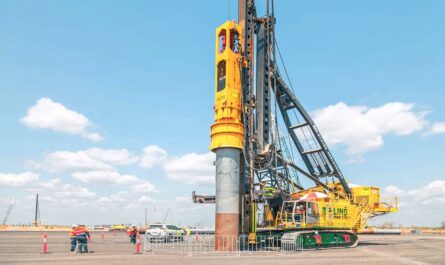Mining has historically been a labor-intensive and dangerous industry. However, technological advancements are allowing mines to become safer, more efficient, and environmentally-friendly operations. This new approach is commonly referred to as “smart mining.”
Smart mining utilizes digital technologies, automation, robotics, autonomous vehicles, sensors, and advanced analytics to improve performance across all areas of the mining value chain. By optimizing processes, conserving resources, and reducing waste, smart mining is transforming mining into a smarter, data-driven industry.
Automation and Robotics
One of the biggest drivers of the smart mining trend is the increased use of automation and robotics to replace humans in hazardous tasks. Autonomous trucks, drills, and loaders are becoming more common on mine sites around the world. For example, Rio Tinto’s Iron Ore operations in Australia now have a fleet of over 150 autonomous haul trucks. This has improved productivity while reducing costs and improving safety by removing humans from risky driving situations.
Smart Mining are also adopting industrial robots for tasks like drilling, shoveling, crushing, and materials handling. Robotic drills can operate 24/7 in any conditions without fatigue or safety issues. Similarly, robotic shovels and loaders reduce accidents from tipped or overloaded vehicles. Robots are even used for sampling, surveying, and equipment inspections in hazardous areas. Overall, automation is eliminating the most dangerous jobs and physically demanding roles on mine sites.
Remote Operations and Augmented Reality
Another defining aspect of smart mining is remote and augmented reality technologies that allow aspects of mining to be controlled off-site. For autonomous haul trucks, remote operators can monitor and manage fleets from central control rooms far from the active pit or quarry.
Additionally, augmented reality headsets are giving on-site workers enhanced vision capabilities. Heads-up displays show vital information, procedures, and safety warnings directly in the field of vision. Mine maps, 3D models, and remote experts can also be overlaid on the real-world environment. This allows for remote troubleshooting and improves training. Some mines have experimented with fully remote operation centers where no personnel need to be on-site.
Internet of Things (IoT) Sensors
Smart mines heavily leverage IoT sensors to generate insights from operational data. Sensors monitor things like equipment health, stockpile levels, dust and gas conditions, wall stability, pit gradients, water management, and more. This real-time equipment and environmental performance data drives optimizations.
For instance, vibration sensors on drilling rigs can detect impending equipment failures, allowing proactive maintenance. Stockpile volume sensors ensure reserves are accurately tracked. Air quality monitors guidance work shutdowns during hazardous conditions. Slope stability sensors avert wall collapses or landslides. Fluid management sensors optimize water recycling. All this sensing contributes to improved safety, costs savings, compliance and business planning.
Data Analytics and Predictive Maintenance
with IoT, smart mines are able to accumulate vast volumes of operational data. Advanced data analytics then extract valuable insights. For example, equipment telematics combined with machine learning can predict breakdowns before they occur. This enables predictive maintenance schedules based on actual usage rather than generic timetables.
Fleet managers also use analytics to optimize equipment assignments, deployments, fuel consumption and more. Drill and blast algorithms help geologists and engineers design more efficient blast patterns. Analytics even guide long-term production planning based on real-time reserves modeling. As more mines adopt digital twins that mirror physical operations in virtual models, data-driven insights will continue improving productivity across the board.
Environmental Monitoring
smart technologies further help minimize mining’s environmental footprint. Real-time air and water quality monitoring detects contamination issues early. Sensor networks track wildlife, vegetation recovery, erosion and dust from haul roads. Drones map changes to landscapes, while GPS ensures machines stay within permitted boundaries.
Advanced analytics also optimize resource usage. For example, tailings facilities can incorporate predictive moisture modeling to reduce water consumption. Energy managers leverage smart metering to find inefficiencies across entire mine grids. Overall, smart solutions empower mines to fulfill increasingly stringent regulations while shrinking energy and water footprints.
As technology costs decline and capabilities increase, smart mining solutions will likely become standard across the industry within the next decade. 5G networks and edge computing will further accelerate advanced applications like autonomous haulage fleets. Computer vision, Artificial Intelligence, and digital twins will drive the next stage of optimizations.
Fully automated underground mines may emerge, guided by digital rock mass models. Nanotechnology, biomining and renewable energy sources will possibly transform operations as well. And as smart solutions improve productivity while reducing costs and environmental impacts – mining will evolve into a safer, more sustainable and socially responsible industry for the future.




